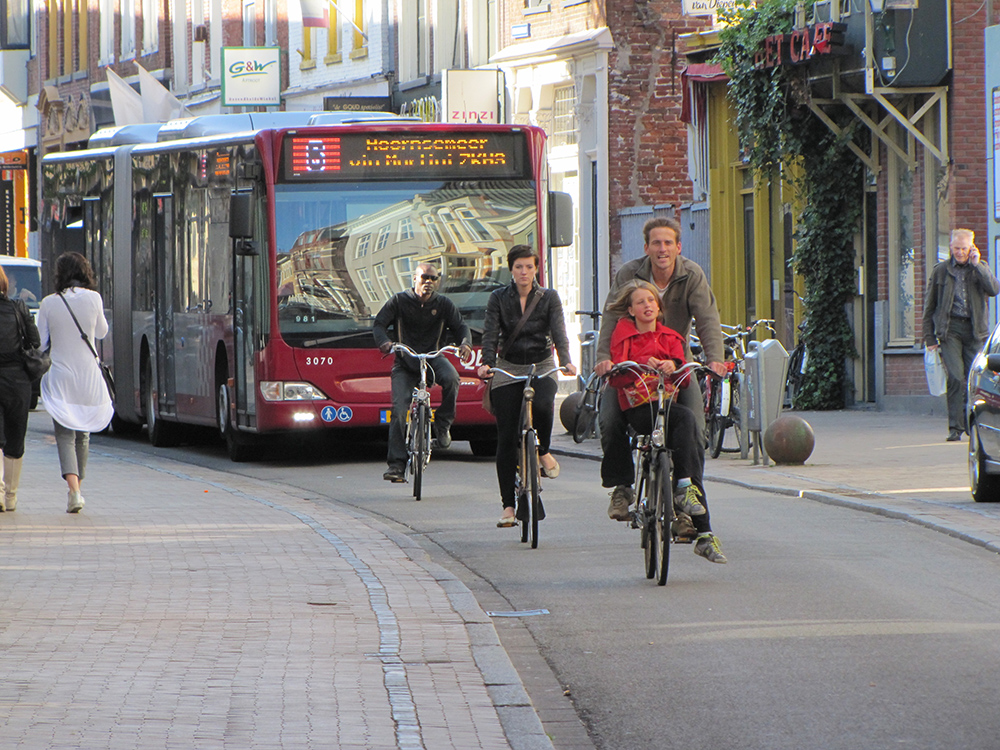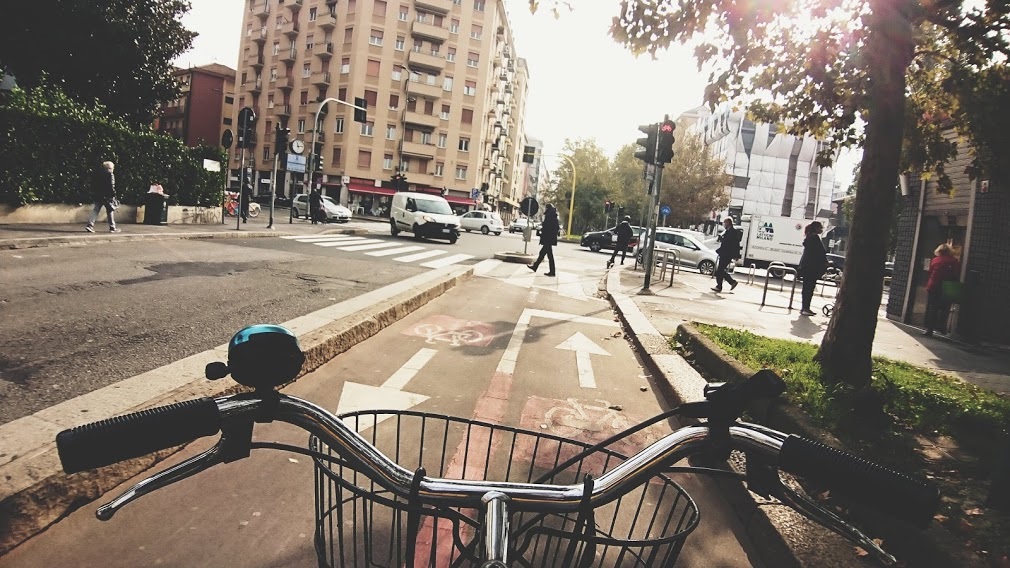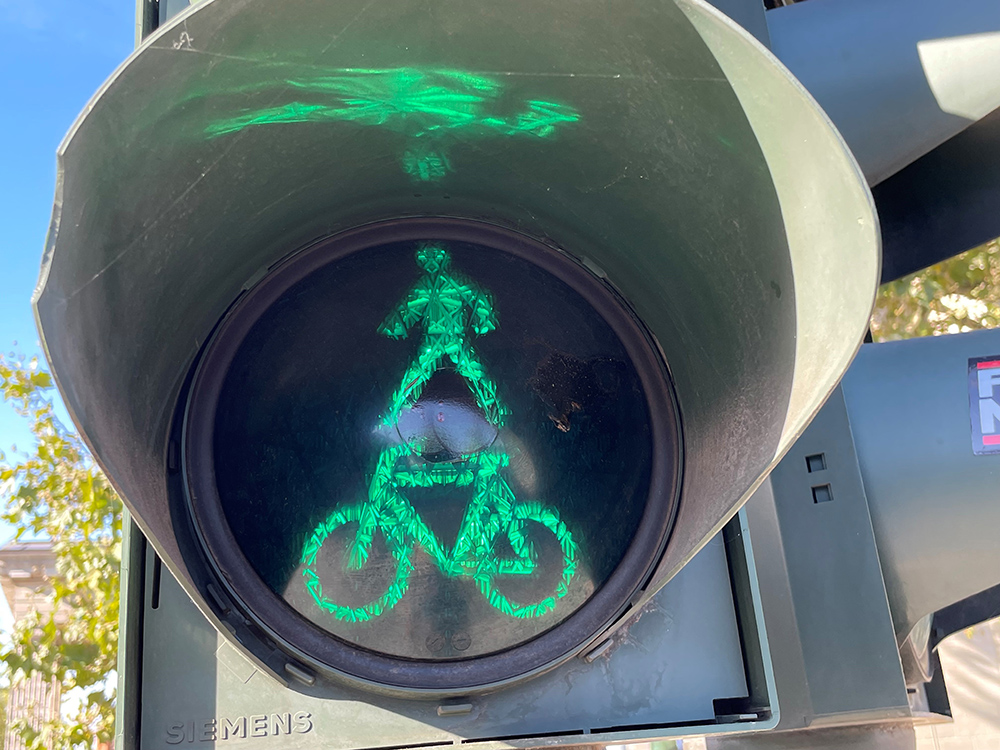
Is this finally cycling’s moment? The Urban Mobility Framework published by the European Commission (EC) in December 2021 prioritised cycling (and other ‘active modes’ of transport) in cities.
The Commission had never before come out with such strong statements in favour of cycling, noted the European Cyclists' Federation (ECF). Similarly, last November’s COP26 conference in Glasgow also mentioned ‘active travel’, which is generally accepted to include cycling.
In both cases, however, cycling organisations had to lobby hard, and late into the drafting process, for bicycles to be given space in the final documents, perhaps demonstrating that the fight for better cycling facilities is not yet over.

As Covid ravaged economies, the EC in 2020 announced €672.5 billion for the bloc’s Recovery and Resilience Facility to help rebuild economies. The funding was also partly designed to ensure support for green and digital transitions, enabling EU countries’ economies to become more sustainable and resilient.
“Every state had to put forward their planning [to obtain funding] and we lobbied that cycling should be included,” said Jill Warren, the ECF’s CEO.
“The investment had to be spent quickly to give economies a boost and we argued that making cycle lanes, et cetera, available was a perfect, shovel-ready investment.”
Recovery plans
Twenty-one of the EC’s 27 states ended up including cycling in some way in their recovery plans. Italy, for example, put €600 million in its plan for cycling infrastructure, both touristic and urban. And 300 European cities announced 2,600km of cycling improvements.
In December 2020 the EC announced its Sustainable and Smart Mobility Strategy. “That had some necessary language in it, suggesting that cycling infrastructure in Europe should double,” said Warren. “It was not as much as we would have liked at the time, but certainly there were nods in the direction of cycling that we had never seen before. We lobbied very hard to say that if the EC was really serious they had to do more for cycling; electric vehicles [EVs] themselves won’t get you there. You need more cycling if you’re really going to reduce CO2. You really have to prioritise cycling and walking in the mix to reach your goals.”

While the EC’s new focus on cycling was very welcome, she cautioned that concentration now had to be on translating the policy document’s words into actions. The EC proposal had to go before the European Council and Parliament, where it could either be strengthened or watered down.
As part of the EC proposal, some 400 cities in the Trans European Transport Network are developing Sustainable Urban Mobility Plans. These are policy documents to enable a city to achieve improved mobility through walking, cycling and public transport.
These policy documents have much more legal power behind them than previous attempts to encourage cycling, she noted.
Active travel
Last November’s Cop26 climate change conference in Glasgow was an obvious occasion for the importance of cycling to be stressed by the assembled governments. It gradually became apparent, however, said Warren, that it would not figure in the final communiqué.
“We noticed the draft transportation document was all about EVs. We put together a joint letter with everyone we could think of. We recognised that alongside EVs, we needed more emphasis on cycling.” The final document did not explicitly mention cycling, but included the phrase ‘active travel’, “which you can take to mean walking and cycling”.
Like Warren, Chris Bruntlett, marketing and communications manager of the Dutch Cycling Embassy – a non-profit foundation that exports knowledge and expertise globally – believes there has been undue focus over the past 20 years on electric cars as a ‘fix-all solution’ to the problem of pollution.
“It’s only now that we’re recognising that electric cars are still cars and have spatial inefficiencies,” he says. “Trading internal combustion engine-powered cars for battery-powered cars isn’t necessarily a great solution.”
The relatively small amounts spent on walking and cycling could bring considerable ‘bang for the buck’, he noted.
When it comes to creating more cycling facilities, Covid merely accelerated a trend that was already under way, said Bruntlett.

Cities had realised that vehicles filled new road lanes and car parks as soon as they were built. That meant that some of Europe’s busiest cities, such as Paris, Milan and London, were among the fastest to diversify their traffic networks.
In January this year, Milan announced a €225 million Cambio cycling mobility plan consisting of cycling routes in four concentric rings around the city centre, together with 16 cycling corridors stretching out from the hub.
And some cities had already started to prioritise cycling before the EC resiliency document appeared. Paris mayor Anne Hidalgo had announced her intention to cut car parking in the French capital by 60,000 spaces. Perhaps significantly, that had not harmed her re-election.
Warren said that it was a myth that if a city removed car parking spaces from downtown areas that business would be adversely affected. In fact, she said, business increased because the area became a more pleasant one in which to shop. Research had also shown that cyclists tended to spend more. And Paris, after issuing a $174 million ‘Plan Velo’ cycling blueprint, is now embarking on a $290 million ‘Plan Velo: Act 2’ that will increase secure cycle parking in the city, encourage more children to take to bicycles and provide funding to maintain cycle paths.
At the start of the pandemic, “the fear was that people would just jump in their cars, to avoid crowded public transport systems”, Bruntlett said. “That led to many 20-year plans to increase cycling facilities being telescoped into five years.”
The largest barrier to people taking up cycling, cycling more often, or allowing their children to cycle was safety - or perceived safety, points out Warren. The best method was introducing cycling infrastructure that was separated and protected from vehicular traffic, by kerbs or other barriers.
It was particularly important to protect cyclists at intersections, which was where most accidents happened. This could be achieved through several methods, including giving cyclists and pedestrians priority over vehicles, reducing speed limits to, say, 30km/h.
Cycling projects make most progress when they had designated ‘champions’ promoting them, said Bruntlett, “because the moment you suggest you should remove cars, or space for cars, or parking, you have a culture war”. Despite vociferous opposition, however, surveys showed a consistent clear majority in favour of lower-traffic areas.
“Cycling and walking have to do some of the heavy lifting if we’re talking about decarbonising our traffic - we can’t have electric cars being the only solution,” he said. Creating a safe infrastructure – which means physically separating cyclists from motorised traffic – is an essential prerequisite of that goal.
That means doing more than simply painting cycle lanes at the side of roads. “It’s not enough to put cyclists next to buses, trucks and cars,” Bruntlett concludes. “You have to provide them with a comfort level that makes them feel they aren’t risking their lives every time they cycle.”
Two wheels good? Not without effort
The Netherlands is often thought of as the archetypal cyclist-safe location. Any visitor to Dutch cities is immediately struck by the network of cycle lanes.
But it was not always like this, points out Jill Warren, CEO of European Cyclists' Federation. “In the 1950s, ‘60s and early ‘70s, these cities became absolutely dominated by cars.” That led to increasing numbers of children being killed in traffic incidents, which in turn led to major protests.
Gradually, the situation changed and Dutch cities became the cyclist-friendly urban environments one sees today. Their experience means that other cities can leapfrog the improvements that Dutch cities went through and introduce traffic-calming measures much more quickly.
Such measures not only made cities safer, but contributed measurably to residents’ physical and mental fitness, with reductions in conditions such as depression, she said. And cities with these factors, such as Copenhagen and Vienna, regularly featured in ‘Top 10’ lists of the world’s most liveable locales.
Chris Bruntlett of the Dutch Cycling Embassy points to the turning point of the early 1970s. Protestors’ efforts were helped by the 1973 oil crisis, when fuel prices more than tripled and sales of bikes doubled.
Bruntlett argues that the practical nature of the Dutch helps cycling’s cause: “The Dutch cycling industry tends to focus on the ‘how’ and makes it happen.”





